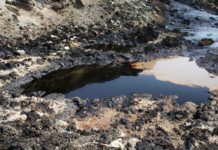The economic benefits that can accrue from land remediation were emphatically underlined by the stampede to buy property at the Battersea Power Station regeneration project in London.

MORE THAN £600m worth of property inside the station was sold in what is believed to the fastest selling property development on record.
Buyers paid between £343,000 for a studio flat to £6m for a penthouse as 600 properties sold over three days.
The purchases represented 75% of phase one – known as Circus West – and sales exhibitions continue in international markets in response to the widespread pre-launch registered interest.
Rob Tincknell, chief executive officer of Battersea Power Station Development Company, commented: “This is a water shed moment in the history of the power station and key to finally enabling this important London site to be regenerated, more than thirty years since its decommissioning.”
Building on site is forecast to begin in late summer, with completion of the first phase in 2016/2017.
Preparatory work on the first phase, which consists of eight core buildings to the West of the 39-acre site, has already begun and as construction begins later in the year it will coincide with the start of the renovation of the Grade II listed power station itself, the largest brick building in Europe and one of the most significant surviving examples of Art Deco architecture. However, behind many regeneration projects of this size lie big clean-ups and Battersea is no exception.
As far back as 2007, asbestos specialist the PA Group was involved at the site to carry out work worth £450,000.
The first stage of its involvement was a full environmental and asbestos assessment/survey of the site prior to initial remediation. The investigation included heavy metals, water, asbestos, paint, oils, acids (tanks), drains, concrete and brick assessments.
Following the site investigations the company tendered the required remediation via specification and procured the project with the client to remove asbestos contamination from buildings and land.
The presence of asbestos was a major factor and the remedial package was worth more than £300,000. The remediation included periodic management and supervision of the operatives undertaking the works. Control of operatives was crucial because of the large and sensitive site and the repetitive nature of the works.
There was also a large single operation for dust removal within an ancillary building, a job that entailed very repetitive cleaning and wiping of services by a large number of workers.
On such a high-profile and sensitive site supervision and control was key, according to PA. The company’s site manager was in constant communication with the client and its representatives to advise on progress and periodic issues ensuring compliance.







